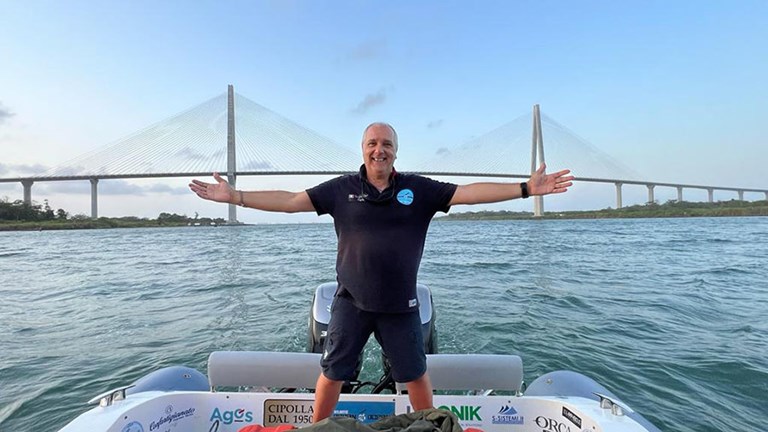How the Panama crossing works
Cartegena to Panama
After a ‘short’ hop from Cartegena of around 13 hours (273 nautical miles), the bulk of this leg was mainly taken up with preparing for the Panama Canal crossing. While the actual crossing is relatively short (6-7 hours), most of the time is spent gaining clearance for the crossing. Connecting the Atlantic and Pacific oceans, the Spanish Canal de Panamá, a lock-type canal, is owned and administered by the Republic of Panama.
One of the largest and most difficult engineering projects ever undertaken, the construction of the Panama Canal was initially started in 1881 by France but taken over by the United States in 1904 and completed 10 years later in 1914. That makes the Canal 107 years old!
The crossing is also a formal process – you don’t just sail in and through – as it consists of numerous artificial lakes, channels and three sets of locks. For a quick summary of how the crossing works, see this video by Sergio:
As Sergio relates, “I dreamed of this moment since the whole adventure was planned. I knew it would be a unique and indescribably emotional experience. Sailing along a canal that separates two oceans. The magnificence of an extraordinary man-made opera.”
A little taste of the transit sequence along the Panama Canal. At the entrance, before the first lock, inside the lock, and the lock once complete. Even though it’s just 49 nautical miles in length, it took 8 and a half hours. Plenty of care and concentration is needed to follow the instructions provided by the Panama Canal Authority so as not to hinder the many vessels navigating in both directions.
Before entering the first lock
Inside the lock
Ready to traverse the lock
Our captain aboard his Aretusa (meaning ‘the waterer’. She was a wood nymph who turned into a fountain 😊) finished sailing in the Canal. Before him lay the magnitude of a “new” and hungry ocean: the Pacific! A new adventure within the adventure starts from here


















